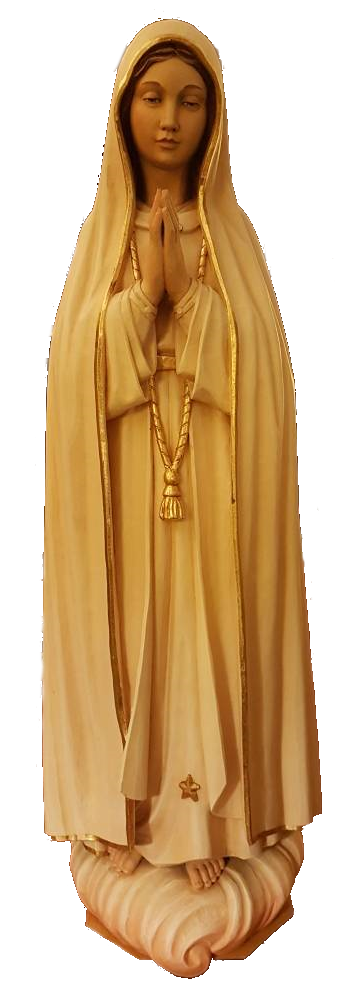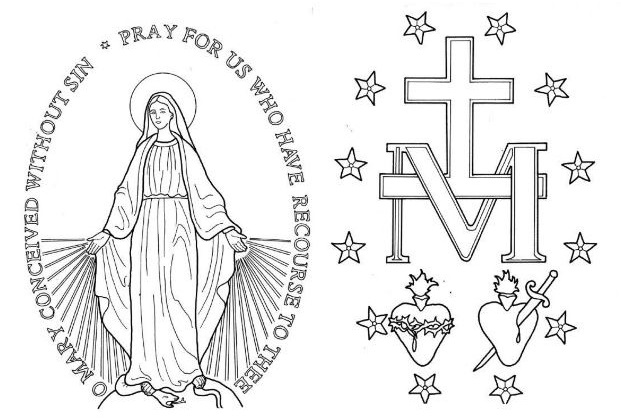 Today, we will be celebrating the Mass of the Solemnity of the Immaculate Conception at 8pm. As part of the preparation for our Inaugural Parish Feast, The Solemnity of Mary, Mother of God, we would be blessing and crowning the processional statue of Our Lady of Fatima during this mass. This statue is to be carried in procession on 1st January 2018 and will be followed by fellowship.
Today, we will be celebrating the Mass of the Solemnity of the Immaculate Conception at 8pm. As part of the preparation for our Inaugural Parish Feast, The Solemnity of Mary, Mother of God, we would be blessing and crowning the processional statue of Our Lady of Fatima during this mass. This statue is to be carried in procession on 1st January 2018 and will be followed by fellowship.
Please indicate the number of persons from your household attending the fellowship by visiting http://goo.gl/2qGJJv.
The Feast of the Immaculate Conception
The dogma of the Immaculate Conception was infallibly defined, ex cathedra, by Pope Pius IX in 1854. To clarify a common misconception, the Immaculate Conception does not refer to the conception of Jesus, but rather that of Mary. Indeed, we can observe that the date on which the Feast of the Immaculate Conception (8th December) is celebrated, is 9 months before the Feast of the Nativity of the Blessed Virgin Mary (8th September). It is also important to note, however, that the Immaculate Conception does not mean that St Anne was a virgin when she conceived Mary. What it actually means is that Mary, through the merits of her Son and Saviour, Jesus Christ, was preserved immaculate from all stain of original sin.
Although it seemingly took over 18 centuries to declare that Mary was conceived without sin, we must realise that the Church does not simply declare dogmas but rather after many centuries of careful consideration. The belief that Mary was conceived without sin was indeed a part of the early Church and had always been held as a pious belief by the faithful. It is interesting therefore, to take note of 2 Marian apparitions, supporting the validity of the dogma; one before, and the other after the declaration of the dogma of the Immaculate Conception.
The Apparitions at Rue du Bac
On 18 July, 1830, Catherine Labouré, a 24 year-old novice sister was privileged to see Our Lady, who had a mission for her, in the chapel at the convent at Rue du Bac in Paris. On 27 November that same year, Our Lady once again appeared to her with instructions to have a medal struck on a model given to her in a vision. Around the oval frame of the medal were to be inscribed the words, “O Mary, conceived without sin, pray for us who have recourse to thee.” Now more commonly known as the Miraculous Medal, it was at first called “the Medal of Mary of the Immaculate Conception”.

The Apparitions at Lourdes
On 11 February, 1858 (just 4 years after the proclamation of the dogma of the Immaculate Conception in 1854), 14 year-old Bernadette Soubirous saw an apparition of a beautiful young girl in hollow at a small rocky hill called Massabielle. This was to be the first of a total of 18 apparitions. She did not claim the lady she saw to be Mary but referred to her as “aquero”, meaning “that thing”. During one of the apparitions, Our Lady asked for a chapel to be built and Bernadette conveyed the request to the local parish priest, Fr. Peyramale, who insisted that “aquero” would have to reveal her name before any further action was to be taken.
On 25 March that same year, the feast of the Annunciation, Bernadette finally received a response from “aquero” who simply stated “Que soi era Immaculada Concepcion” or “I am the Immaculate Conception”. Being a poor, young child without much education, Bernadette did not understand what this meant and so repeated the phrase over and over as she ran until she met Fr. Peyramale and left him dumbfounded with the words “I am
the Immaculate Conception”. Our Lady had indeed responded to his request that she
reveal her name.

It is indeed humbling and awesome to realise that the Immaculate Conception is one of the many things set in motion since the fall of Adam and Eve, by God for our salvation. To end with an observation by Scott Hahn on the validity of Mary’s Immaculate Conception; “If you could make your mom completely free of all the effects of original sin, would you do it?”. Jesus could, and Jesus did.
